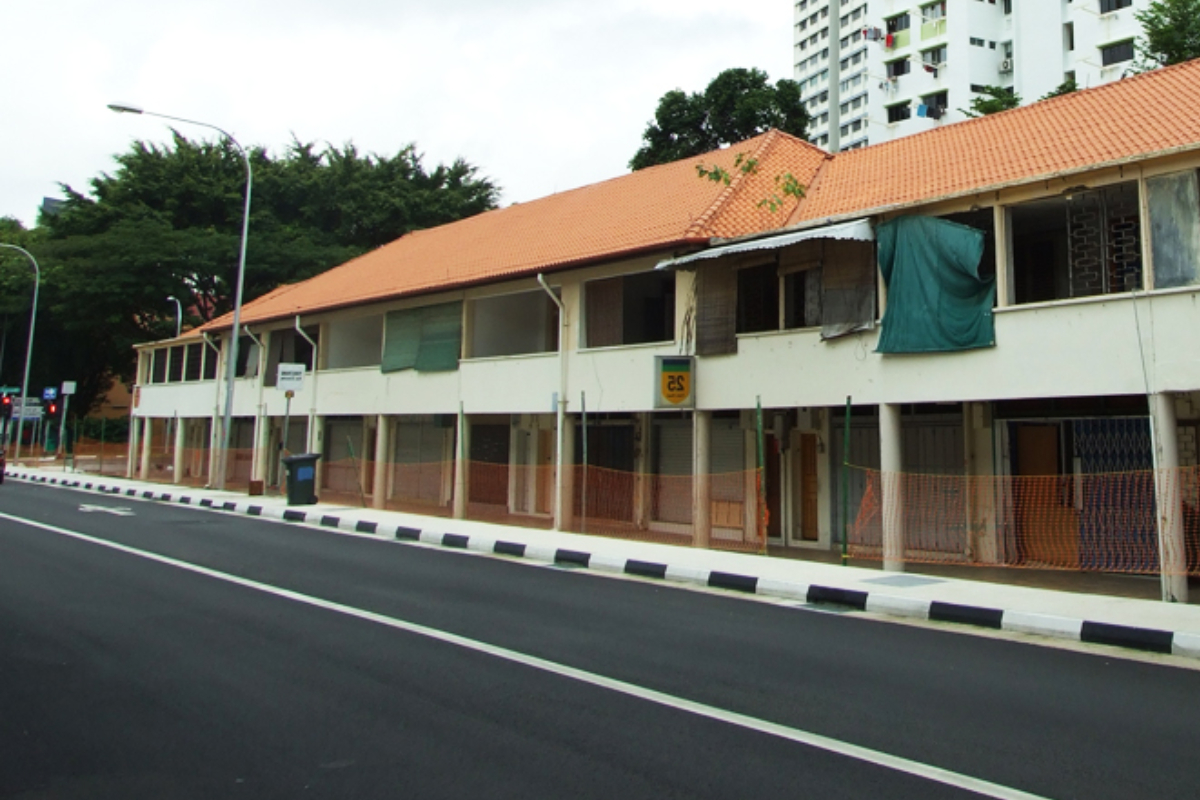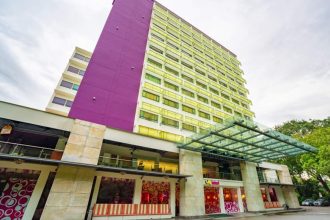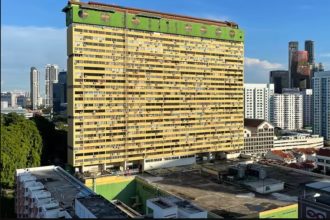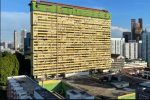Key takeaway
25 Owen Road was one of Singapore’s first public housing flats built immediately after World War II. As a project under the Singapore Improvement Trust (SIT), its design, allocation mechanism, and eventual demolition tell a story of how housing policy shifted after 1946, revealing the emerging priorities of social equity, efficient design, and postwar rebuilding.
In the heart of Singapore just after World War II, 25 Owen Road stood as an early sign of change. Built in 1947 by the Singapore Improvement Trust (SIT), these flats were a tangible answer to a pressing housing need. Their story reveals not just bricks and mortar, but the hopes and challenges of postwar Singapore.
Why 25 Owen Road matters in Singapore’s housing story
After 1946, Singapore’s civil government returned, and building new homes became a top priority. The Singapore Improvement Trust (SIT), the colonial-era agency in charge of public housing, was under pressure to provide affordable accommodation in a city reeling from war damage and shortages.
The flats at 25 Owen Road were among the first completed under this post‑war push. They embodied a shift: from wartime survival to planning for a future where more Singaporeans could live in safer, better-designed housing. This evolution eventually paved the way for developments such as First Valley condominium projects that introduced private residential innovation.
The design of 25 Owen Road: simple, smart, human-centred
These flats were modest, just two storeys, but built with clear intent. SIT laid them out so that each unit ran about 70 feet deep from the front to a back lane. That depth eliminated the need for airwells and helped ensure adequate airflow and light throughout.
On the ground floor, there were shops; upstairs, the flats. Twelve shops and twelve flats made up the building, a mixed‑use arrangement that offered both community services and homes. This mixed-use design can be seen reflected later in Chinatown’s first shopping atrium projects that shaped Singapore’s urban landscape.
How the flats were allocated: a new system for a new era
SIT initially planned to sell the flats, but when no acceptable tenders came in, they changed course. Instead of auctioning off all the units, they introduced a points system for allocation.
That points‑based system rewarded applicants on criteria like need or contribution rather than pure wealth. It reflected a more equitable philosophy: housing was not just for profit, but for restoring dignity. Similar allocation strategies influenced the development of early Queenstown housing, Singapore’s first HDB estates.
Context: Public housing in postwar Singapore
To fully appreciate the significance of 25 Owen Road, it helps to see it within the broader story of Singapore’s postwar housing development. After the war, the city faced a severe shortage of safe and affordable homes. This period set the stage for how public housing would evolve in the decades that followed.
The SIT era
The Singapore Improvement Trust (SIT) was established in 1927 to plan and provide public housing, primarily for middle-income residents. Before World War II, SIT completed projects in areas like Tiong Bahru, creating some of Singapore’s earliest modern housing blocks. After the war, the organization shifted focus to mass housing, addressing urgent needs for families who had lost their homes. Between 1947 and 1959, SIT built thousands of units, experimenting with layouts, mixed-use designs, and allocation systems that sought to balance efficiency with social equity.
The transition to HDB
By 1960, the Housing and Development Board (HDB) replaced SIT, taking over the responsibility of providing large-scale public housing. HDB introduced standardized designs, higher-density flats, and more comprehensive community planning. The early SIT projects, including 25 Owen Road, served as important templates, teaching lessons about design, community integration, and allocation strategies that informed HDB’s subsequent mass housing programmes. This transition marked a key turning point in Singapore’s approach to housing, moving from small-scale experiments to a structured national system.
A snapshot: early public housing buildings after 1946
| Building | Key facts | Nearest MRT | Sources |
|---|---|---|---|
| 25 Owen Road | 2 storeys, built 1947 by SIT; 12 flats + 12 shops | — (no MRT at the time) | Official profile |
| Dakota Crescent Estate | Low‑rise SIT blocks, completed 1959; first SIT one‑room flats | Mountbatten (nearest modern MRT) | Reference article |
| Blocks 45, 48 & 49 Stirling Road | 7 storeys, built in 1960 by HDB; first flats fully completed by HDB | Queenstown MRT (approx) | Reference article |
What 25 Owen Road reveals about housing after 1946
Examining 25 Owen Road offers a window into the priorities and challenges of postwar public housing. The building tells us not just about bricks and design, but about social goals, urban planning, and the transitional nature of early housing efforts. Several lessons stand out:
- Social equity mattered: The points system for allocating flats demonstrates that SIT sought to prioritise residents based on need rather than financial capability, reflecting a focus on fairness during a time of widespread housing shortage.
- Design mattered for health: The building’s deep layouts eliminated the need for airwells, improving ventilation and natural light, showing that functional design was critical for creating livable spaces in dense urban areas.
- Mixed use was a priority: By combining shops on the ground floor with flats above, SIT fostered convenience and community networks, making daily life easier and encouraging interactions among neighbours.
- Transitional institutions: SIT served as a bridge between wartime emergency housing and the structured, large-scale programmes later implemented by HDB, highlighting how postwar planning evolved rapidly.
- Impermanence and change: The eventual demolition of 25 Owen Road in 2012 shows that early experiments were valued primarily for function. These flats reveal how urban priorities shift, and how housing must constantly adapt to new needs and policies.
Fast facts about post‑war housing in Singapore
The period immediately after World War II was a time of urgent need and rapid change for housing in Singapore. Authorities had to respond to growing populations, damaged infrastructure, and the public’s pressing demand for safe, affordable homes. Several key milestones and figures illustrate just how the city tackled these challenges:
- SIT built roughly 20,907 flats between 1947 and 1959, marking the beginning of large-scale public housing in postwar Singapore.
- The Housing and Development Board (HDB) was founded on 1 February 1960, taking over public housing responsibilities from SIT and setting the stage for modern mass housing.
- Queenstown’s Stirling Road blocks (45, 48 & 49) were among the first projects built fully under HDB, representing a new era of purpose-built flats designed to accommodate families efficiently.
- The population of Singapore surged after the war, leading to a severe housing shortage that made these early interventions critical to social stability and urban planning.
The end of 25 Owen Road, and what it signals
The building at 25 Owen Road was never conserved. In October 2012, SIT announced that there would be no more rentals, and later that year, the structure was demolished.
Its demolition reflects how some early postwar experiments were valued for their function rather than their heritage. Once newer housing models and policies came into place, the site’s original role faded. The building’s life cycle subtly mirrors the transition from emergency housing to a long-term national housing strategy. Its story also reminds us of the colonial housing authority that guided postwar rebuilding efforts.
Broader lessons from 25 Owen Road
When we study 25 Owen Road, we learn more than just construction details. We see how early public housing was not just about providing shelter but about rebuilding a city that had endured war and social disruption. It was about restoring dignity to residents and creating a sense of community in new neighborhoods. The design choices, from airflow-focused layouts to mixed-use spaces, show careful consideration for everyday life. The allocation mechanism reflects a deliberate attempt to balance fairness and need, while the building’s eventual erasure underscores how priorities and urban landscapes change over time. Taken together, 25 Owen Road illustrates how Singapore’s housing policy evolved rapidly after 1946, moving from immediate postwar fixes to a national system focused on equity, scale, and long-term social purpose, setting the stage for the HDB’s ambitious programs in the decades that followed.








